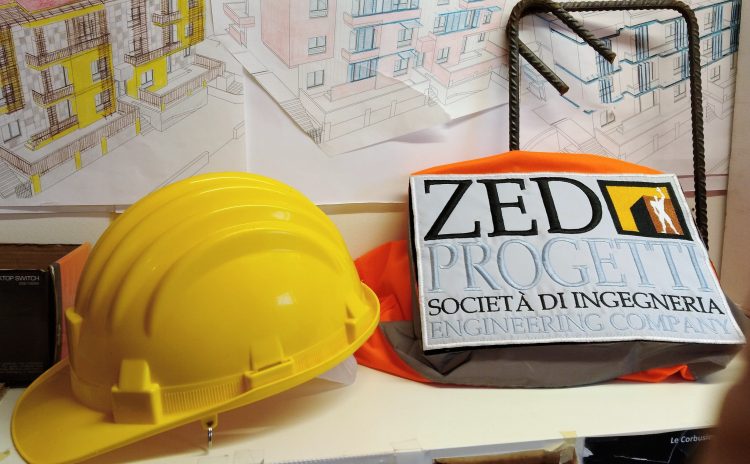DURATA/SCADENZA DI UN CASCHETTO DI PROTEZIONE
LIFETIME OF A SAFETY HELMET
- 06 Mag 2018

Riguardo agli elmetti di protezione di utilizzo nei cantieri edili si è già parlato in precedenti articoli, che hanno avuto per oggetto un inquadramento generale della materia e una specifica spiegazione sulle norme UNI EN relative.
Si ricorda che le proprietà protettive di un elmetto sono soggette a degradarsi, sia per l’uso (un caschetto va sempre sostituito prima della scadenza in caso di urti significativi), sia a causa delle condizioni ambientali presenti nei cantieri edili, freddo in inverno, esposizione diretta ai raggi solari in estate. Un altro fattore che ne influenza la durata è il tipo di materiale.
Nel caso di un caschetto in materiale termoplastico (PE Polietilene, PVC Polivinilcloruro, ABS Cycolac, ecc.), il tipo impiegato più comunemente nei cantieri edili, il termine massimo di utilizzo è di anni cinque, a partire dalla data di produzione stampata sulla calotta dello stesso.
Il simbolo CE e le norme UNI EN di conformità del prodotto devono essere obbligatoriamente indicati da una marcatura impressa sul materiale stesso del caschetto di protezione, all’interno della calotta.
Si descrive di seguito come leggere tale marcatura.

Fig. 1 La marcatura deve essere sempre indicata. Nel caschetto in figura la stessa è impressa all’interno della calotta, sulla visiera

Fig. 2 Come leggere gli elementi di marcatura
- CE: indica che il prodotto è conforme ai requisiti di sicurezza previsti dalle direttive comunitarie (Unione Europea);
- UNI EN 397 2013: indica la norma di riferimento
(Nota: La norma UNI EN 397 2013, quella dell’esempio, è quella attualmente in vigore, e sostituisce la precedente norma UNI EN 397 2012).
UNI indica che è una norma elaborata dall’Ente Italiano di Unificazione, EN indica che è una norma elaborata dall’0rganismo di Normazione Europea, 397 indica che l’oggetto della norma è un elmetto di protezione per l’industria, 2013 indica l’anno della norma.
Gli elmetti UNI EN 397 sono destinati a proteggere chi li indossa dagli effetti di urti alla testa contro oggetti immobili e dalle conseguenze causate dalla caduta di eventuali oggetti dall’alto, come carichi sospesi o in movimento;

Fig. 3 Come leggere gli elementi di marcatura
- PEHD: indica il tipo di materiale dell’elmetto (PE Polietilene HD ad alta intensità);
- IVARS ADAMELLO: indica il nome del fabbricante;
- un cerchietto con i numeri che vanno da 1 a 12: individua i mesi dell’anno, e una freccia indica lo specifico mese di produzione.
Nel caso in figura la punta della freccia indica il numero 2, dunque l’elmetto è stato prodotto nel mese di febbraio; - un secondo cerchietto con una serie di numeri: individua una sequenza di anni, e una freccia ne indica uno specifico, l’anno di produzione dell’elmetto.
Nel caso in figura i numeri riportati vanno da 17 a 22, cioè sono indicati gli anni dal 2017 al 2022, la punta della freccia è rivolta verso il numero 17, l’elmetto è stato perciò prodotto nell’anno 2017.
In conclusione l’elmetto considerato, un elmetto di protezione per l’industria, risulta conforme alle norme CE ed è stato prodotto nel mese di febbraio dell’anno 2017, dunque, avendo una durata massima di cinque anni, se non subirà urti e sarà ben conservato, potrà essere utilizzato fino al mese di febbraio dell’anno 2022. Dopo, dovrà essere sostituito con uno nuovo.
 Arch. Anselmo Santilli- ZED PROGETTI srl
Arch. Anselmo Santilli- ZED PROGETTI srl
Regarding the use safety helmets, we have already spoken in previous articles, which dealt with a general classification of the subject and a specific explanation on the relevant UNI EN standards.
Please note that the protective properties of a helmet are subject to degradation, both for use (a helmet must always be replaced before expiry in case of significant impact), both because of the environmental conditions present on construction sites, cold in winter, direct exposure to sunlight in summer. Another factor that influences its durability is the type of material.
In the case of a thermoplastic helmet (PE Polyethylene, PVC Polyvinylchloride, Cycolac ABS, etc.), the most commonly used type on building sites, the maximum use term is five years, starting from the production date printed on the shell of the same.
The CE symbol and the UNI EN standards of conformity of the product must be indicated by a marking on the material of the protective helmet inside the shell.
The following is how to read this marking.CE: indicates that the product complies with the safety requirements of EU directives (European Union);
UNI EN 397 2013: indicates the reference standard
(Note: The UNI EN 397 2013 standard, that of the example, is the one currently in force, and replaces the previous UNI EN 397 2012 standard).
UNI indicates that it is a standard elaborated by the Italian Unification Body, EN indicates that it is a standard elaborated by the European Standardization Organization, 397 indicates that the object of the standard is a protective helmet for the industry, 2013 indicates the year of the law.PEHD: indicates the type of material of the helmet (PE High-density polyethylene HD);
IVARS ADAMELLO: indicates the name of the manufacturer;
a circle with the numbers from 1 to 12: identify the months of the year, and an arrow indicates the specific month of production.
In the case shown in the figure the arrowhead indicates the number 2, so the helmet was produced in February;a second circle with a series of numbers: identifies a sequence of years, and an arrow indicates a specific one, the year of production of the helmet.
In the case shown in the figure, the numbers shown range from 17 to 22, the years from 2017 to 2022 are indicated, the arrow point is towards number 17, the helmet was therefore produced in 2017.
In conclusion, the helmet considered, a protective helmet for the industry, complies with the CE standards and was produced in February of the year 2017, therefore, having a maximum duration of five years, if it will not be impacted and will be well preserved, it can be used until February of the year 2022. After, it must be replaced with a new one.

